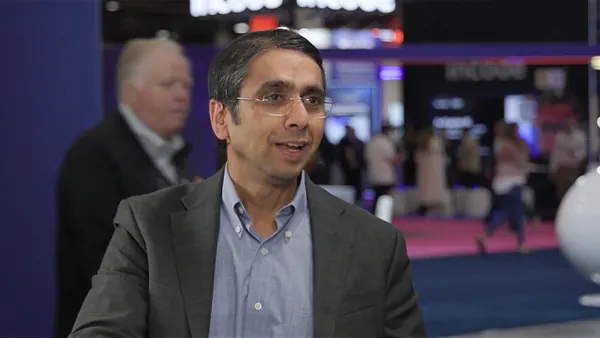While capital allocation is one of the CFO's more important return-generating responsibilities, many companies still approach it as a pro forma exercise. They vary little in the proportion of capital deployed to different categories, such as organic investments, M&A and returns to shareholders each year.
Particularly during a market upturn, and with a clearer view of future cash flows, now is the time to be an "agile allocator."
Agile allocators move capital aggressively to high-return opportunities, rather than sticking to fixed allocations each year, to meet long-term strategic goals and lift total shareholder returns (TSR). For example, these companies are more willing to consider M&A when market prices are low or invest more heavily in innovation rather than expansion of capital expenditure (CapEx) for a declining product.
So why aren't more companies agile allocators? One obvious reason is organizational inertia. But another is that many companies lack an individual accountable for evaluating investment opportunities on a level playing field. This can lead, for example, to budgeting research and development (R&D) based on a benchmark, such as percentage of revenue, rather than evaluating the investment against alternative opportunities.
Agile allocators can generate excess returns
A recent EY analysis of nearly 1,000 companies' capital allocation strategies shows that agile allocators can generate excess shareholder returns. We analyzed TSR data1 over three distinct periods: 2008 to 2011, 2012 to 2015 and 2016 to 2019. While there was no significant difference during the global financial crisis, agile allocators generated a median TSR of 60% from 2012 to 2015 and 49% from 2016 to 2019. These returns exceeded the TSR of passive allocators over the same time periods of 35% and 43%, respectively.
Agile allocators may reap outsized returns because they move capital quickly at key moments to capture market opportunities. This may include investing in attractive adjacencies, such as an athletic apparel manufacturer entering the golf equipment market.
Excess returns by sector
Sector-specific dynamics can impact the agile allocator benefits. In the same analysis2, we noted that agile allocators drove higher TSR in the consumer, health care and technology sectors by adapting to quickly changing industry dynamics. In the technology sector, for example, agile allocators outperformed passive allocators by 32% and 14% in median TSR from 2012 to 2015 and from 2016 to 2019, respectively. One semiconductor company, for example, shifted capital aggressively from CapEx to R&D and M&A and saw a substantial increase in TSR as a result.
However, agile allocators in the manufacturing and energy sectors did not significantly outperform passive allocators. One potential reason for this is that these sectors tend to invest much more heavily in CapEx than other industries given their asset profiles — which could dampen the benefits of reallocation. Sufficient data to analyze this in depth is not publicly available, but we suspect that companies that practice more agile allocation within their CapEx investments would tend to outperform as well. Another potential reason is that investors have been more focused on broader structural changes in those industries, such as the emergence of electric vehicles in manufacturing and the impact of climate change in the energy sector. Shareholders may give these broader industry dynamics more weight — at least recently — than looking at the results of capital allocation.
Median TSR by sector, agile vs. passive allocators

(Note: Agile allocators are defined as companies whose standard deviation on either capital expenditures, research and development, or mergers and acquisitions was greater than 25% from 2008 to 2019.)
Key steps to being an agile allocator
Becoming an agile allocator takes more than merely moving budget each year. Successful allocators of capital can follow several steps:
- Appoint an executive accountable for agile capital allocation: This person should develop, refine and monitor a rigorous, comprehensive process — and have visibility over all potential capital uses. This individual should also provide the CFO with timely information to challenge and reward business leaders' investment decisions, as well as make informed and unbiased judgments when needed.
- Evaluate investment options on an even playing field: Using common metrics and KPIs when evaluating different types of investments can add speed and confidence in decisions to move capital — particularly from one investment type to another.
- Educate stakeholders about agile allocation: A shift from static allocation might be jarring to some stakeholders who are used to seeing a specific percentage each year. Shareholders and other stakeholders are more likely to react favorably when they see how a capital allocation decision fits into the long-term value-creation strategy.
- Monitor investments more actively: This process should include budget to actuals, as well as reviews of forecasts and business plans. A shift in the project outlook may necessitate a course correction to obtain the expected returns or shutting down the project entirely. Many companies are not willing to "fail fast" — more active monitoring can make the case for redeployment.
- Conduct post-mortem reviews: Review the results of capital allocation decisions and adapt the process going forward to drive more effective decision-making.
Conclusion
CFOs need to move their companies toward agile capital allocation now in order to capitalize on changes across industries and outperform peers. Strategically reallocating capital to the areas that drive long-term value, rather than a static process that puts the same percentages in the same buckets each year, can help boost TSR.
Please click here to read about how we can help CFOs with their most complex capital allocation challenges.
Dave Poniatowski is a Principal, Strategy and Transactions, Ernst & Young LLP. Loren B. Garruto is the Americas Transactions and Corporate Finance Leader, Ernst & Young LLP.
The views reflected in this article are those of the author and do not necessarily reflect the views of Ernst & Young LLP or other members of the global EY organization.
1. Capital IQ 2008-2019
2. Ibid










